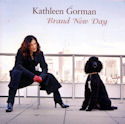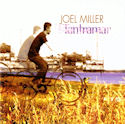Diana Krall
Eagle Vision EV 30273-9
When I first heard that Diana Krall had released a DVD of a concert in Rio de Janeiro, I marvelled at the chutzpah it takes for a girl from Nanaimo, B.C. to perform bossa nova for an audience in the country of its birth. Then I thought, if any non-Brazilian is qualified to sing the music known as "a whisper in the wind" it's Krall. With her laid-back, breathy delivery and ability to maintain energy and groove on very slow tempos, she seems born to bossa. And the Rio audience on the DVD apparently agrees, as it's the bossa standards like So Nice and Quiet Nights of Quiet Stars (Corcovado) that get the biggest response of the evening.
But "Live in Rio" is not all Brazilian beats, as it opens in full-on jazz mode with the quartet - long-time compatriots Anthony Wilson, guitar, John Clayton, bass, Jeff Hamilton, drums and Krall on piano and vocals - swinging hard through I Love Being Here With You. With so much attention paid to Krall's singing talents, it's great to see her stretch out on piano, since her first ambition was to be a jazz pianist, before she discovered she had a voice. A full orchestra conducted by Ruria Duprat joins the band on many of the down tempo numbers and with Claus Ogerman's arrangements the gorgeousness factor on those songs goes through the roof.
Masterfully shot and edited, the camera work allows long looks at Krall, mostly, but also frequently cuts to the rest of the band and lingers on the musicians' hands during solos. Footage of adoring glimpses of Rio - beaches, parks, mountains, with the grittiness and slums discreetly left out - are interspersed to break up the concert footage. At a little over two hours running time, with an extra of interviews with Krall and the band members talking about their affinity for bossa nova and Rio, this is a satisfying and intimate visit with one of the most deservedly popular and genuine jazz singers performing today.
Cathy Riches
Kathleen Gorman
Independent KG0801
The self-produced debut CD by Torontonian Kathleen Gorman is a polished gem that offers solid songwriting, thoughtfully presented. Plenty of dedication is on display here, from the catchy songs to their tasteful arrangements to the leader's strong delivery on both vocals and keys. If forced to categorize it, this is a poppy-jazzy-bluesy-soulful collection of songs, most of them about hard-learned lessons in life and common concerns surrounding love. The blues-infused No More Room is a strong opener, the tender ballad Far Too Late a memorable standout, while the optimistic title track is especially radio friendly. Brand New Day would fit well on a "smooth" jazz radio program because it is easy on the ears, light on the heart and an excellent showcase of Canadian talent. Aside from composing accessible songs, singing them and playing the piano, Gorman has also written some great charts for top-drawer Canadian players including Colleen Allen, Henry Heillig, Alan Hetherington, Rob Piltch and many more. In addition to Gorman's piano and Rhodes, the instrumentation includes basses, guitars, saxophone, Hammond B organ, drums, percussion, flute, and cello. On the two instrumental pieces, Gorman's fingers do the singing, especially on the radiant Rialto. The songs on "Brand New Day" appear to come from a deep place; thankfully, Kathleen Gorman has succeeded in conveying their universality.
Ori Dagan
Joel Miller; Mandala
ArtistShare AS 0072
Montreal-based saxophonist Joel Miller, a native of Sackville, N.B., succeeds by translating into sound the relaxed feel of the Tantramar marsh near his home town as well as other images. Aiding him is a quintet of top-flight multi-instrumentalists and a trio of guests. Miller, who composed the 10 evocative tunes, deserves kudos for his arrangements that not only take full advantage of everyone's talents, but also avoid the trap of using Amelia McMahon as a "girl singer" - instead harmonizing her lilting voice with his own soprano saxophone lines or grace notes from Bill Maher's trumpet.
With many of the pieces written in cannon form with folk music intimations, the most notable back-up player is Kenny Bibace on acoustic and electric guitars. Throughout, his contributions range from super-charged near-rock licks to light-fingered chromatic runs. More concerned with evocative scene-setting than extended soloing, Miller and fellow reed player Bruno Lamarche impress by ignoring solipsism for call-and-response obbligatos and riffs. Furthermore, although concerned with inducing traditional aural images, "Tantramar" doesn't ignore modern techniques. Miller enlivens a few tracks with understated electronics including sampled fowl sounds on Chickadee's Other Song.
If the CD does have drawbacks, it's that everything is too laid-back. Even Boogie Gaudet, a quasi-blues with snapping guitar runs, flying tenor saxophone honks and plunger trumpet lines only flirts with emotion. When it seems as if the band has worked up a full head of steam, the tune solidifies into restrained pleasantness.
Ken Waxman
EXTENDED PLAY - Columbia's LEGACY 50 years on
By Jim Galloway
Three of the most important contributors to jazz in the late ‘50s are highlighted in a series of recent double album re-issues on Columbia Legacy. This was a very fruitful era of recordings and the music presented here represents pivotal works by Dave Brubeck, Miles Davis and Charles Mingus.
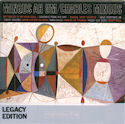 Mingus Ah Um (Columbia/Legacy 8869748010 2) gave us at least three compositions which stamped him as one of the most expressive voices in jazz - Better Git It In Your Soul, Goodbye Pork Pie Hat, a homage to Lester Young, and Fables Of Faubus. Jelly Roll, a rewrite of Mr. Jelly Roll Soul, recorded earlier for the "Blues and Roots" album, is a nod in the direction of a perhaps unlikely hero for Mingus, Jelly Roll Morton. Fables of Faubus is an example of the Mingus who was also known for his activism against racial injustice. It was written as a protest against governor Orval E. Faubus of Arkansas. If you have the original LP it is probably well worn by now and in addition this CD has three numbers not included on the LP. An important aspect of the music on this album is the use of group improvisation which was an essential ingredient at the start of jazz in New Orleans but which had largely disappeared when the emphasis later switched to individual soloists.
Mingus Ah Um (Columbia/Legacy 8869748010 2) gave us at least three compositions which stamped him as one of the most expressive voices in jazz - Better Git It In Your Soul, Goodbye Pork Pie Hat, a homage to Lester Young, and Fables Of Faubus. Jelly Roll, a rewrite of Mr. Jelly Roll Soul, recorded earlier for the "Blues and Roots" album, is a nod in the direction of a perhaps unlikely hero for Mingus, Jelly Roll Morton. Fables of Faubus is an example of the Mingus who was also known for his activism against racial injustice. It was written as a protest against governor Orval E. Faubus of Arkansas. If you have the original LP it is probably well worn by now and in addition this CD has three numbers not included on the LP. An important aspect of the music on this album is the use of group improvisation which was an essential ingredient at the start of jazz in New Orleans but which had largely disappeared when the emphasis later switched to individual soloists.
Mingus Dynasty, the 2nd disc of this Legacy Edition, acknowledges his debt to Duke Ellington with the inclusion of very personal interpretations of Things Ain't What They Used To Be and Mood Indigo. There is a blistering version of Gunslinging Bird, the original title of which was If Charlie Parker Were a Gunslinger, There'd Be a Whole Lot of Dead Copycats. The album as a whole has a more formal feel to it than the "Ah Um" collection but gives us further insight into the creative working of Mingus' mind. If you don't know this music, this is your opportunity to hear a great jazz original, one of the most important composers and performers of jazz, and if you do have the old LPs, there are enough alternate takes and unedited material (much of the original release was heavily edited) to make this a worthwhile purchase.
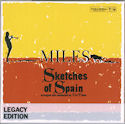 Miles Davis' Sketches of Spain (Columbia/Legacy 88697 43949 2) with the hauntingly beautiful arrangements of Gil Evans was almost like a new-found revelation for me. I have all the original LPs in this set of CDs but had not listened to the Miles album for years and from the opening bars of Concierto de Aranjuez (Adagio) I was transfixed by the beauty of Gil Evans' orchestration. It sets the tone of an album which showcases Miles Davis at his creative best. There are very interesting and informative notes by Gunther Schuller in the accompanying booklet. The 2nd CD has eleven tracks consisting of alternate takes including a live performance of Concierto de Aranjuez (Adagio) from a 1961 Carnegie Hall concert which Schuller considers to be superior to the version on the original LP. An added bonus is a quintet recording of Teo, originally from the "Someday My Prince Will Come" album of 1961.
Miles Davis' Sketches of Spain (Columbia/Legacy 88697 43949 2) with the hauntingly beautiful arrangements of Gil Evans was almost like a new-found revelation for me. I have all the original LPs in this set of CDs but had not listened to the Miles album for years and from the opening bars of Concierto de Aranjuez (Adagio) I was transfixed by the beauty of Gil Evans' orchestration. It sets the tone of an album which showcases Miles Davis at his creative best. There are very interesting and informative notes by Gunther Schuller in the accompanying booklet. The 2nd CD has eleven tracks consisting of alternate takes including a live performance of Concierto de Aranjuez (Adagio) from a 1961 Carnegie Hall concert which Schuller considers to be superior to the version on the original LP. An added bonus is a quintet recording of Teo, originally from the "Someday My Prince Will Come" album of 1961.
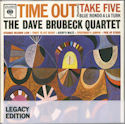 The Dave Brubeck Quartet was formed in 1951 and had a long residency at the Black Hawk club in San Francisco. Paul Desmond was in the original group and Joe Morello joined in 1956 followed by Eugene Wright who became a regular member in 1959. It is this formation which is featured in the Legacy Edition reissue of Time Out (88697 39852 2) whichhas, in addition to 2 CDs, an accompanying DVD of an interview with Brubeck explaining how the album came about and giving his insight into how the compositions, all originals, evolved. It is an educational and entertaining look behind the scenes of the album that introduced Take Five, which of course was to become one of the biggest hits in jazz history. Blue Rondo a la Turk, Strange Meadow Lark and Kathy's Waltz are among the other treasures of this recording. The second CD is of previously unreleased music recorded by the quartet at the Newport Festival in 1961, 1963 and 1964 and has the group in full flight with some soaring playing by Paul Desmond in particular. In fact, the purity of sound made by the alto saxophone of Desmond is an absolute joy throughout the proceedings on both CDs. Dave Brubeck is the only member of that original quartet who remains active, but 50 years later he is still thrilling audiences - and still getting requests for Take Five.
The Dave Brubeck Quartet was formed in 1951 and had a long residency at the Black Hawk club in San Francisco. Paul Desmond was in the original group and Joe Morello joined in 1956 followed by Eugene Wright who became a regular member in 1959. It is this formation which is featured in the Legacy Edition reissue of Time Out (88697 39852 2) whichhas, in addition to 2 CDs, an accompanying DVD of an interview with Brubeck explaining how the album came about and giving his insight into how the compositions, all originals, evolved. It is an educational and entertaining look behind the scenes of the album that introduced Take Five, which of course was to become one of the biggest hits in jazz history. Blue Rondo a la Turk, Strange Meadow Lark and Kathy's Waltz are among the other treasures of this recording. The second CD is of previously unreleased music recorded by the quartet at the Newport Festival in 1961, 1963 and 1964 and has the group in full flight with some soaring playing by Paul Desmond in particular. In fact, the purity of sound made by the alto saxophone of Desmond is an absolute joy throughout the proceedings on both CDs. Dave Brubeck is the only member of that original quartet who remains active, but 50 years later he is still thrilling audiences - and still getting requests for Take Five.
SPECIAL MENTION - Oscar Peterson's SONGBOOKS, 50 years on
By Bruce Surtees
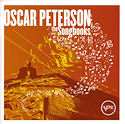 The recordings by Charles Mingus, Miles Davis and Dave Brubeck reviewed above are not the only seminal jazz releases to be celebrating their half century this year. 2009 marks the 50th anniversary of Oscar Peterson's second set of Songbooks, available ina new boxed set from Universal (VERW3933072), exclusive to Canada, at $39.95. Peterson's earliest recordings were made in Montreal by RCA from 1945 to 1949 with a trio, not including Ray Brown but with one Bert Brown on bass. In 1949, impresario Norman Granz, on his way to the airport in Montreal, heard a live broadcast of Peterson playing in a local club. The rest is jazz history: Carnegie Hall, Jazz at the Philharmonic, etc., etc. The first group of "Songbooks" was recorded during 1952/53/54 in Los Angeles with Ray Brown and Barney Kessel. Some have been re-issued on Verve but all of them are available on Mosaic Records, priced at US$ 119.00 plus shipping, and duties. This second set was recorded during July and August 1959 in Chicago with Peterson in his usual (usual for him that is, unusual and impossible for others) freewheeling style accompanied by Ray Brown and an energized Ed Thigpen on drums. There are 108 tracks on five discs with songs by Cole Porter, Richard Rodgers, Irving Berlin, Jerome Kern, Duke Ellington, Harold Arlen, George Gershwin, Harry Warren, Vincent Youmans and Jimmy McHugh. The original tunes are never obscured so that even if the listener has not heard them that shouldn't diminish the impact. This set is a must-have for just about anyone with a CD player.
The recordings by Charles Mingus, Miles Davis and Dave Brubeck reviewed above are not the only seminal jazz releases to be celebrating their half century this year. 2009 marks the 50th anniversary of Oscar Peterson's second set of Songbooks, available ina new boxed set from Universal (VERW3933072), exclusive to Canada, at $39.95. Peterson's earliest recordings were made in Montreal by RCA from 1945 to 1949 with a trio, not including Ray Brown but with one Bert Brown on bass. In 1949, impresario Norman Granz, on his way to the airport in Montreal, heard a live broadcast of Peterson playing in a local club. The rest is jazz history: Carnegie Hall, Jazz at the Philharmonic, etc., etc. The first group of "Songbooks" was recorded during 1952/53/54 in Los Angeles with Ray Brown and Barney Kessel. Some have been re-issued on Verve but all of them are available on Mosaic Records, priced at US$ 119.00 plus shipping, and duties. This second set was recorded during July and August 1959 in Chicago with Peterson in his usual (usual for him that is, unusual and impossible for others) freewheeling style accompanied by Ray Brown and an energized Ed Thigpen on drums. There are 108 tracks on five discs with songs by Cole Porter, Richard Rodgers, Irving Berlin, Jerome Kern, Duke Ellington, Harold Arlen, George Gershwin, Harry Warren, Vincent Youmans and Jimmy McHugh. The original tunes are never obscured so that even if the listener has not heard them that shouldn't diminish the impact. This set is a must-have for just about anyone with a CD player.
EXTENDED PLAY - 40 Years of MEV
By Ken Waxman
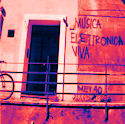
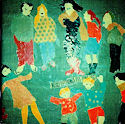
Ironically, Stop The War, recorded in 1972 without Lacy but with percussionist Gregory Reeves and Karl Berger on marimba as well as List, Curran, Rzewski and Teitelbaum, is the most jazz-like - as well as the most programmatic - track. Commenting on the Viet Nam war, the output from the synthesizers used by Curran and Teitelbaum is almost visually descriptive. There are fortissimo allusions to explosions, jagged beeps, watery whooshes and short-wave-like static. Meanwhile List honks and slurs, Berger whaps his wooden keys to produce full-force reverberation, Reeves taps out an intermittent marital beat and Curran's piccolo trumpet asides add to the contrapuntal timbres that underlie the performance. Among the broken octaves and split tones, Rzewski provides his own commentary with metronomic piano chording. Among the recognizable melodies he plays are a sardonic When Johnny Comes Marching Home and a concluding Taps.
Lacy, who appears on tracks recorded in 1982, 1989 and 2002, gives even more focus to the proceedings. By that point the core trio had graduated from using such jerry-built instruments as a home-made synthesizer, a thumb piano attached to a motor-oil can and an amplified glass plate with springs, to using poly Moogs, modular synthesizers and microcomputers. Yet during a more-than 87-minute performance from 1982, stretched over the first tracks on two discs, the soprano saxophonist's straightforward acoustic exposition encourages everyone to substitute shape for self-indulgence.
Tentatively and authoritatively affiliated staccato timbres from saxophone and trombone (List) not only provide obbligato reflections of one another, but are captured and processed by the electronics. Added to this is Rzewski's processional prepared-piano chording. Eventually the aggressive thumps, clanks and pulsated textures from the blurry synthesized flutters are pushed to one side and the trombonist's braying plunger work and the saxophonist's concentrated split tones join Curran's rowdy piccolo trumpet for a definite, raucous finale.
Even more breath-taking is Lacy's final recorded appearance with MEV in 2002. By this time samplers and Max/MSP real-time digital manipulating programs were the norm for Curran and Teitelbaum. Yet the shimmering wave forms still don't dominate. The acoustic side, which includes Lacy's soprano, List's trombone and Rzewski's piano is further strengthened by the addition of George Lewis (b. 1952), equally proficient on trombone and computer. Meanwhile the other two use the electronic interface and programmed applications to create unique sampled and reprocessed sounds. At one point, dexterously harmonized horn parts share space with sampled snatches of cantorial chants and a loop of vernacular street phrases. Soon Lacy's discursive reed outlines the double-stopped theme as Rzewski kinetically vibrates cadenzas with sympathetic soundboard echoes. As the electronics shimmer in wave-modulated bursts, the pianist's burlesque arpeggios turn serious, backing up interaction among Curran's braying shofar tones, chirping soprano saxophone trills and arching trombone slurs. By the time the head is recapped at a slightly slower tempo, List has even movingly growled the lyrics of You Are My Sunshine.
Completing the set are a quiet, almost completely electronic track by the core trio from 2007 and a 30-minute free-for-all from 1967 that added a vocalist and tenor saxophone. Every track balances anarchy and formalism to create something more than improvised, electronic or so-called serious music. MEV performs sui generis modern music period.



